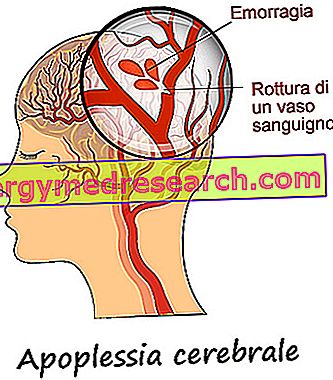Stature: what is it and how is it measured?

"Height" is a noun used in various fields but is generally interpreted as the shortest distance (therefore perpendicular) that joins a lower vertex to the upper opposite vertex. In anthropometry the evaluation of the vertical distance between the top of the head and the soles of the feet is called body height, or stature .
Body height and stature measure an estimated parameter "vertically", whereas if it were assessed in a "horizontal" position it would be referred to as body length . NB . Body length, associated with weight, is the essential parameter in evaluating newborn / infant growth (because it is unable to maintain an upright position). Body length and stature are NOT two overlapping evaluations since they affect differently the physiological curves of the spine (lordosis and kyphosis of the spine).

The Vertex is the highest sagittal point of the head with respect to the horizontally oriented Frankfurt plane.
For more information on how to measure stature, visit the dedicated article.
Height of the Italians
In our country the average height is about 168.5 cm (cm), respectively 174.5 cm for adult males and 162.5 cm for adult females, while the normal intervals are 163: 186 cm for man is 151: 174 cm for the woman.
The height therefore varies according to age, sex and territory of origin; the various genetic chains and ethnic groups have different anthropometric characteristics, moreover, even in the same national population group it is possible to identify significant variations in height based on the area of residence (see average height of the Italian regions).
Increase height

Similarly to the obsessive search for body thinness (see eating disorders - DCA) and / or in search of excessive muscularity (see muscular dysmorphism), today it is also possible to observe a good slice of the population that (with every means) tries to increase your body height.
Let it be clear right away that the stature:
- It is genetically determined
- It can undergo pathological changes due to endocrine dysfunction or malnutrition that has occurred during the growth phase
- It develops optimally in the presence of constant physical activity
- It is NOT yet clear whether it could be adversely affected by heavy gymnastics (weight lifting) during growth
- CANNOT increase once physical development is complete
- Decreases with the advent of the third age (consequently to the kyphotic bending of the back).
Anything that disproves what is mentioned in the points listed above is inaccurate, distorted or simply exploited.
Growth hormone to increase height
The height is genetically determined, but the phenotypic expression of stature depends mainly on biological hormonal regulation and the state of nutrition.

Gigantism: Robert Wadlow, 2 meters and 72 cm, next to his father, shows us the effects of a hyper-secretion of GH during development.
Acromegaly: Primo Carnera, famous boxing champion, suffered from acromegaly, an endocrine disease characterized by excessive GH production even in adulthood
EXCLUDING hereditary or radio-induced diseases, BEYOND the pathological changes of the skeleton (rickets and osteomalacia) induced by poor sun exposure and malnutrition (insufficiency of calcium, phosphorus, vitamin D and protein abuse), it is also possible to recognize some deformations bones resulting from the alteration of the hormonal axis .
The bio-regulator "par excellence" of bone development is somatotropin, better known as growth hormone (GH). It is secreted in a "pulsatile" manner, is responsible for the anabolic stimulation of various tissues and, in both males and females, its production (by the pituitary gland or gland) depends on hypothalamic regulation and is significantly greater during the period of development. In adult life the production of somatotropin is reduced and (respecting the circadian rhythms) it reaches the vertex of plasmatic concentration in the night hours.
NB . GH intervenes positively on the growth of the bone (and therefore also of the height) ONLY during the period of development, during which it can be used under strict medical supervision to correct any serious developmental deficits. In adulthood, on the other hand, any attempt to promote the physiological production of GH (see arginine supplementation) or to increase its plasma levels through exogenous injections (such as in doping), besides being DANGEROUS, is completely useless in increasing the height. It is however necessary to specify that clinical cases have been documentary in which the pharmacological abuse of GH in adult age has determined "an alteration of bone morphology", but it was NOT a trivial increase in stature ... on the contrary! A very serious complication known as acromegaly was found . Acromegaly is a true skeletal malformation that mainly affects the bones of the face and those of the limbs; from an etiological point of view, acromegaly can be endocrine (excessive endogenous GH secretion) or, as anticipated, induced by the pharmacological abuse of synthetic GH. This last case refers in particular to doping in bodybuilding but probably can also occur in an attempt to forcibly increase the height.
Additional strategies to increase height
Recently the hypothesis of applying orthopedic limb elongation surgery to increase height has been advanced, but on the other hand it is a technique useful for the bone reconstruction of congenital malformations, such as phocomelia, and unsuitable for pure aesthetic satisfaction; it is a very invasive operation, very risky and also very expensive but with a great application limit. With this technique it is not possible to reach high heights since, on balance, the actual increase is only a few centimeters.

In conclusion, there are no effective methods to increase stature; on the other hand, in the growth period it is advisable:
- Promote the right nutritional benefits
- Ensure proper sun exposure
- Promote physical activity.



